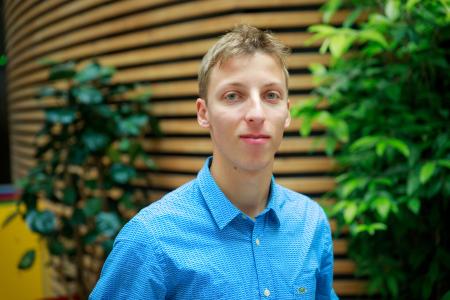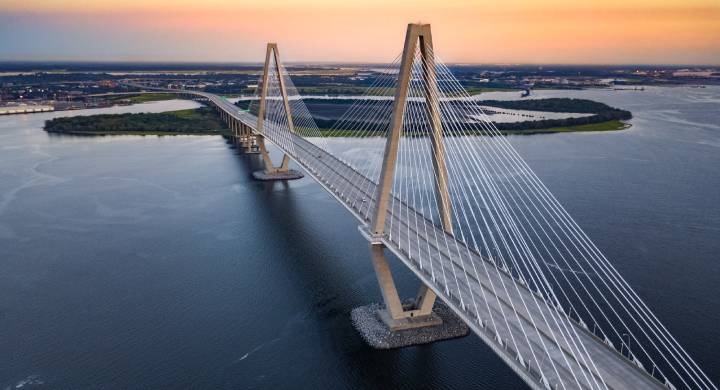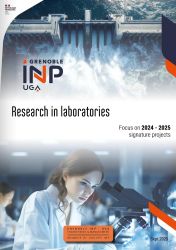According to an American study, around 50% of the hundred or so bridge failures observed annually in the USA are due to a scouring issue. This phenomenon concerns not only bridges, but also all hydraulic facilities with a base located directly in a river.
‘In forming an obstacle to scouring, the bridge piers become its river path. The scouring process is thus disrupted and drags sand and sediment with it. The riverbed erodes rapidly and a scour pit forms around the facility,’ says Matthias Renaud, who is focusing his thesis at LEGI (Laboratory of Geophysical and Industrial Fluid Flows) on this phenomenon.
‘If the river takes a lot of sediment with it, the pit grows deeper and may damage the foundations of the structure, which, in the worst case, can collapse.’
Do not underestimate small scales

To strengthen the safety of a facility, the scouring risk must be taken into account as of the design phase. Digital models are crucial to this task, but reproducing reality in a digital form is highly complicated. Numerous phenomena need to be considered, and sometimes on a tiny scale.
‘Scouring is turbulent; it consists of a multitude of swirls which vary in size and shape. They are random and chaotic and yet highly significant because they drag away the riverbed sediment and carry it in their flow,’ says the young researcher.
Once the sediments are suspended in the water, a tug-of-war begins between gravity which tends to sink them, and the swirls which drag them back into the scour. Others slide and roll along the river bed, and when a slope becomes too pronounced in localised areas, avalanches occur.
‘All these combined movements alter the geometry of the riverbed, which eventually deepens.’
At present, the software solutions used in river and coastal engineering help to resolve large-scale phenomena, but are unable to detect the details of scouring. The academic models which consider small-scale phenomena require far too much computing power to be used in industry.
‘We must thus find a compromise by digitally modelling all these phenomena and developing an open-source digital model which can represent them accurately without involving overly-complex calculations’, Matthias Renaud explains
‘This will be my job for the next three years, and if I succeed, it will make life a little easier for engineers!’
This type of software could be used to accurately size the geometry of piers, foundations and protective facilities, as well as saving money without compromising on safety. Before this however, the software developments will have to be validated through laboratory experiments with Artelia.
*CNRS, UGA, Grenoble INP – UGA
Find out more about the Oxalia Chair




 To strengthen the safety of a facility, the scouring risk must be taken into account as of the design phase. Digital models are crucial to this task, but reproducing reality in a digital form is highly complicated. Numerous phenomena need to be considered, and sometimes on a tiny scale. ‘Scouring is turbulent; it consists of a multitude of swirls which vary in size and shape. They are random and chaotic and yet highly significant because they drag away the riverbed sediment and carry it in their flow,’ says the young researcher.
To strengthen the safety of a facility, the scouring risk must be taken into account as of the design phase. Digital models are crucial to this task, but reproducing reality in a digital form is highly complicated. Numerous phenomena need to be considered, and sometimes on a tiny scale. ‘Scouring is turbulent; it consists of a multitude of swirls which vary in size and shape. They are random and chaotic and yet highly significant because they drag away the riverbed sediment and carry it in their flow,’ says the young researcher.